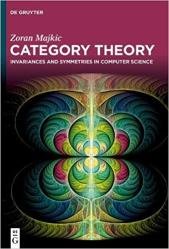 Название: Category Theory: Invariances and Symmetries in Computer Science
Название: Category Theory: Invariances and Symmetries in Computer ScienceАвтор: Zoran Majkic
Издательство: De Gruyter
Год: 2023
Страниц: 436
Язык: английский
Формат: pdf (true), epub
Размер: 54.2 MB
This book presents the formal definition of fundamental transformations in Category Theory as a mathematical language to be used in Computer Science modelling. The book focuses in particular on models with Global and Internal symmetries (in analogy to Field Theories like Quantum Mechanics and General Relativity). The second part of the book is dedicated to more advanced applications of Category Theory to Computer Science.
Mathematics, rightly viewed, possesses not only truth, but supreme beauty—a beauty cold and austere, like that of sculpture, without appeal to any part of our weaker nature, without the gorgeous trappings of painting or music, yet sublimely pure, and capable of a stern perfection such as only the greatest art can show. The true spirit of delight, the exaltation, the sense of being more than Man, which is the touchstone of the highest excellence, is to be found in mathematics as surely as poetry. - Bertrand Russel, p. 60, The Study of Mathematics
Obviously, the more general and important properties (“Lagrangian”) of a given category are its universal categorial properties, like its universal arrows. This intuitive idea, shortly presented, here will be presented in much more details and in relationships with a number of applications in Computer Science, especially with the more recent developments presented in my book.
In computer science, the lambda calculus made its first appearance in programming language LISP, which has been also the first formal programming language to use the procedures as objects of the language. Consequently, in LISP the programs and data are not distinguished, but they are all elements of a unique untyped universe. Anyway, in each programming practice, the types arise naturally, even starting from untyped universes, when the programming objects are categorized according to their usage or behavior. Since the first appearance of types in the programming language Algol 60, when the typing of variables was introduced to check at compile time the connection of instances of use with associated declarations, typing has been considered an essential method that guides a programmer in a design of a programming code.
Functional programming languages, like Miranda, ML, etc. are based on lambda calculus. An early (although somewhat hybrid) example of such a language is LISP as explained above. Reduction machines are specifically designed for the execution of these functional languages in an analog way as the Turing machines, which defined the notion of a computable function via these machines.
Скачать Category Theory: Invariances and Symmetries in Computer Science